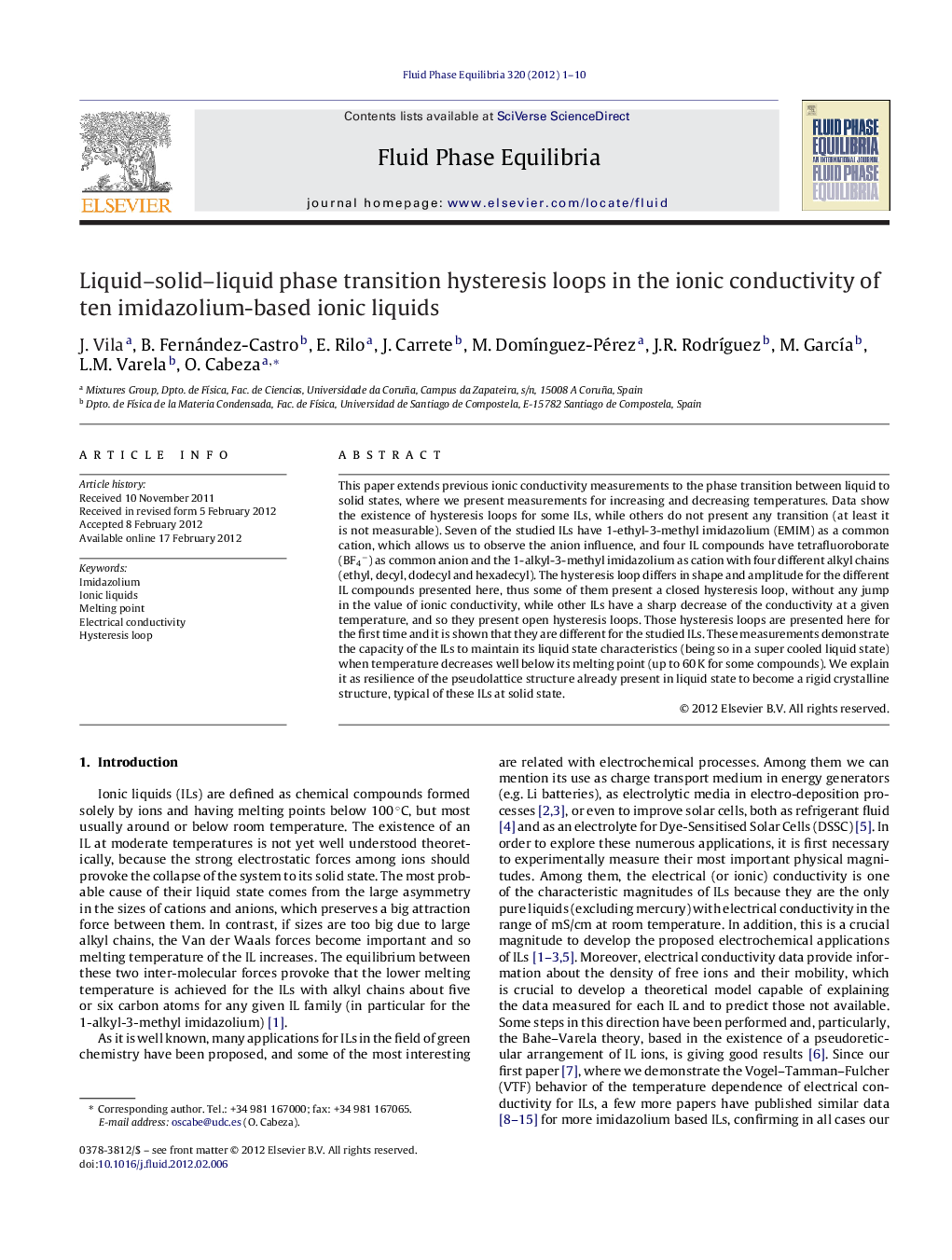| Article ID | Journal | Published Year | Pages | File Type |
|---|---|---|---|---|
| 204235 | Fluid Phase Equilibria | 2012 | 10 Pages |
This paper extends previous ionic conductivity measurements to the phase transition between liquid to solid states, where we present measurements for increasing and decreasing temperatures. Data show the existence of hysteresis loops for some ILs, while others do not present any transition (at least it is not measurable). Seven of the studied ILs have 1-ethyl-3-methyl imidazolium (EMIM) as a common cation, which allows us to observe the anion influence, and four IL compounds have tetrafluoroborate (BF4−) as common anion and the 1-alkyl-3-methyl imidazolium as cation with four different alkyl chains (ethyl, decyl, dodecyl and hexadecyl). The hysteresis loop differs in shape and amplitude for the different IL compounds presented here, thus some of them present a closed hysteresis loop, without any jump in the value of ionic conductivity, while other ILs have a sharp decrease of the conductivity at a given temperature, and so they present open hysteresis loops. Those hysteresis loops are presented here for the first time and it is shown that they are different for the studied ILs. These measurements demonstrate the capacity of the ILs to maintain its liquid state characteristics (being so in a super cooled liquid state) when temperature decreases well below its melting point (up to 60 K for some compounds). We explain it as resilience of the pseudolattice structure already present in liquid state to become a rigid crystalline structure, typical of these ILs at solid state.
Graphical abstractHysteresis loops of the electrical conductivity at liquid–solid–liquid phase transition of EMIM–Tosylate (left) and EMIM–I (right) ionic liquids.Figure optionsDownload full-size imageDownload as PowerPoint slideHighlights► We measure electrical conductivity, κ, in ten ionic liquids in function of temperature. ► Special attention has been focused in the liquid–solid–liquid transition. ► Due to the supercooled liquid capacity of ILs, a hysteresis curve appears below the melting temperature. ► The hysteresis loop depends on anion size and nature. ► We explain the results using the pseudolattice Bahe–Varela model.
